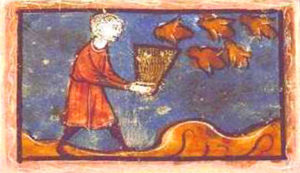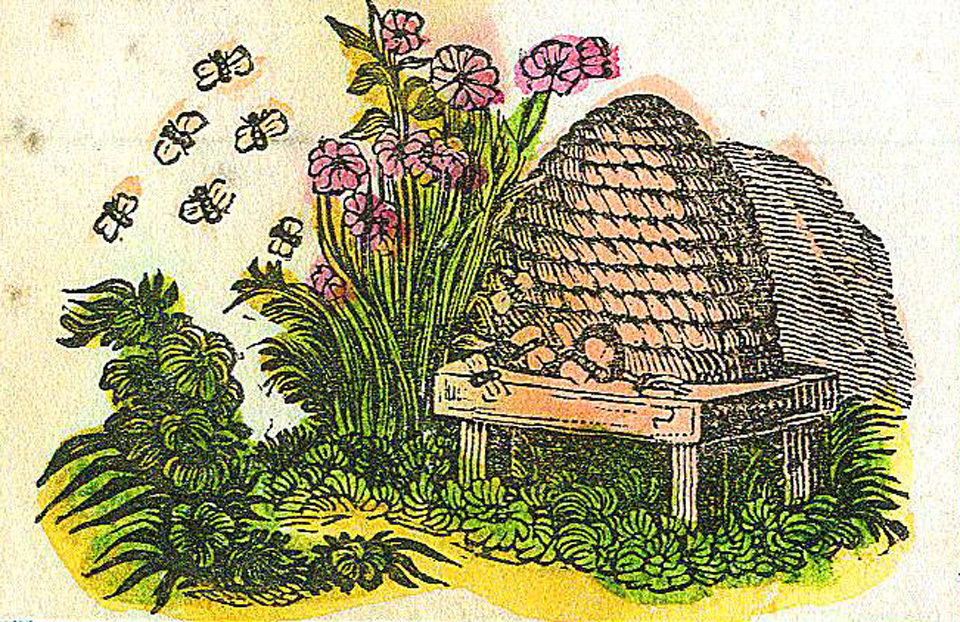Beeswax’s History in the United Kingdom
To us, beeswax is a timeless treasure. But we’re not the only ones who feel this way. Throughout history, countless people have found important uses for beeswax. It’s been an embalming agent, a form of currency, and an art tool. There are so many stories out there about beeswax, we want to share them with you. To start, let’s take a trip across the pond to the United Kingdom. Beginning with the Viking age, we’ll see how people in that region have used beeswax from past to present.
Viking Era
Little is known about trade in the Middle Ages. There are very few records, and many goods were not preserved. However, beeswax is known to have been an important trade good. Pounds of beeswax have been found in sunken Viking ships. At the time, a common use for beeswax was candle making, but candles were rarely used by the Vikings. Instead, the Vikings likely used beeswax for metalworking. The Vikings were so skilled in metalworking, they could mass produce intricate, hollow metal pendants (an incredible feat for their time). To create these pendants, the Vikings likely used a wax mold. For each copy pendant, a wax positive of the master pendant was made. Along with clay and iron spacers, the wax formed a mold for the copy pendant. Due to the intense heat of metalworking, the wax would melt or vaporize, leaving behind a beautiful pendant.
Medieval Ireland
Bees have flourished in Ireland since the medieval era. Almost every household kept their own hives. Beekeeping was so important that the government established a detailed set of laws to govern beekeeping. Known as Bechbreatha (Bee-judgments), the bee laws determined how ownership of swarms, hives, nests, and honey were attributed. For example, a beekeeper owed the owners of the four surrounding adjacent farms a small portion of his honey harvest. This is because his bees collected pollen from his neighbor’s land as well as his own. The property distinctions between swarms, hives, and nests are vague, and they become even more confusing when wild bees are added to the mix. Amazingly, these beekeeping laws were able to precisely define specific rights for a multitude of parties, including many potential indirect parties. The issue was so complex that the laws took up over 20 pages in the country’s law manuscript. If you would like to see these laws in person, an original manuscript of Bechbreatha can be found on display at the Trinity College Library in Dublin.

The Worshipful Company of Wax Chandlers
Established before 1330, The Worshipful Company of Wax Chandlers is one of the oldest surviving trade associations in the City of London. Originally, the association governed all wax chandler activity. This included the sale of beeswax and beeswax products such as torches, seals and beeswax candles. Separate from cheaper tallow candles, beeswax candles were a luxury product used mainly by the church, court and nobility. Religious ceremonies, especially funerals, required massive tapers and elaborate wax ornaments. People then placed a lot of importance on having a proper funeral. Those who could afford it saved money to buy prayers and elaborate funeral services for their deceased loved ones. They believed that the prayers were necessary to release the suffering souls from purgatory. Unfortunately, because of their heavy involvement in funerals and embalming, many wax chandlers died due to disease. Aside from just beeswax, members of the Company also worked in related trades; many worked as spicers, apothecaries and confectioners.
The Company was granted a royal charter by King Richard III in 1484. This charter enabled them to acquire new property and to establish by-laws. They were granted arms the year after by Clarenceaux King-of-Arms. The Company is still operating today, but its responsibilities have changed. Today, the Company focuses on supporting beekeeping, promoting sustainability, and encouraging good governance in the City of London.

Present Day
Did you know that the Scottish Parliament keeps its own beehives? These lucky bees have access to the plants in Holyrood Park, Arthur’s Seat, and, of course, the Parliament’s Gardens. On top of that, they’re situated right across the street from the Queen’s gardens. During the summer, visitors can catch a glimpse of the bees from the Member’s restaurant. The Scottish Parliament has found a unique way to make use of both the honey and the beeswax their bees produce. The honey is bottled up and sold in their gift shop. The beeswax is used to seal every act that the Scottish Parliament passes. Since the Scottish Parliament was founded in 1999, over 200 acts have been sealed!
Have you learned something new? Aren’t you just dying to visit the United Kingdom? To learn more fun facts about bees, check out our beeswax trivia page, and follow our Facebook and Instagram for company news.
Images:
Color Illustration of medieval bees and apiary. Illuminated medieval manuscript. Scan of 2 d image in the public domain believed to be free to use without restriction in the US.
Vintage bee hive illustration; children’s book. Scan of 2 d image in the public domain believed to be free to use without restriction in the US.
Holyrood Park, Edinburgh. Copyright: fintastique / 123RF Stock Photo


